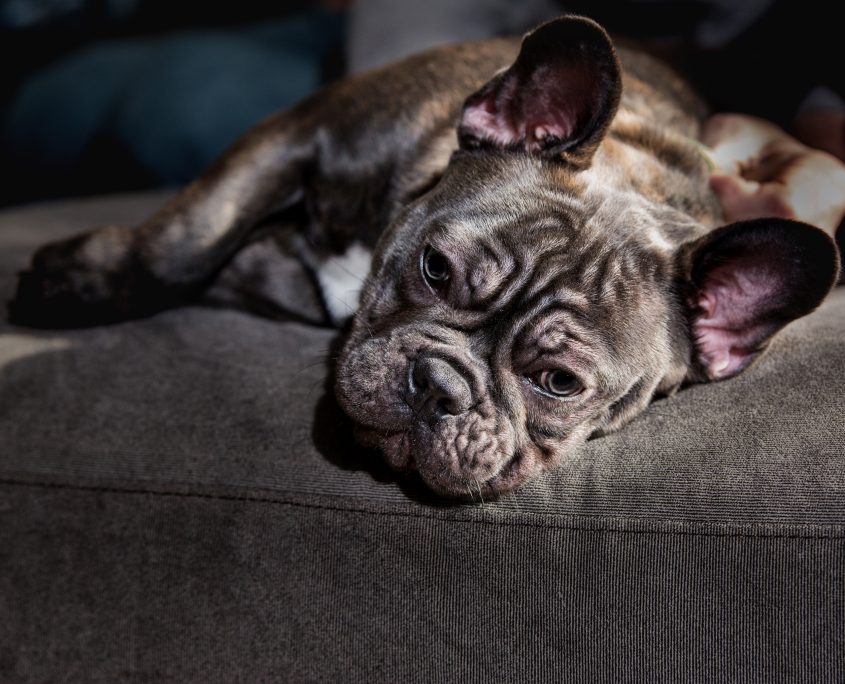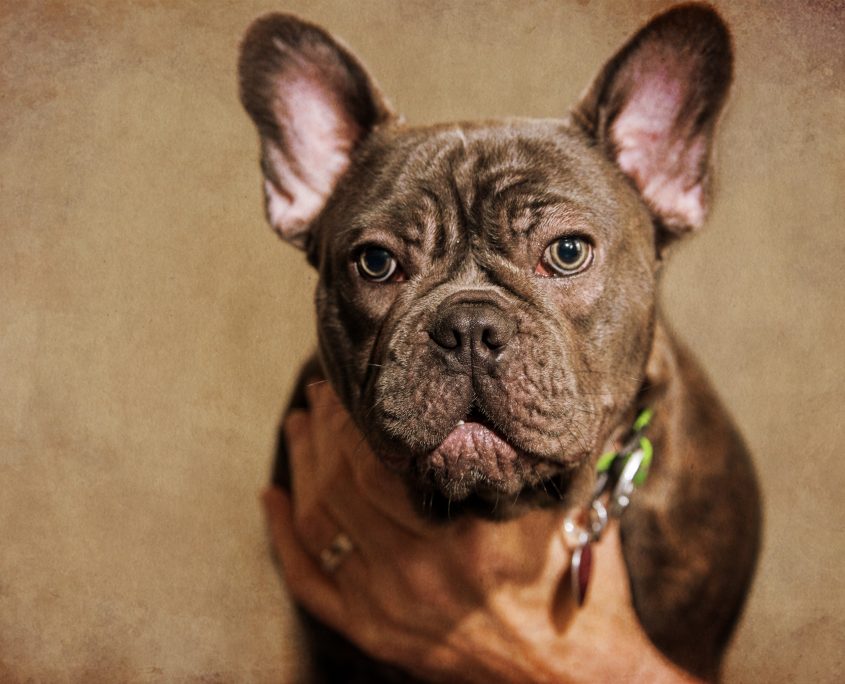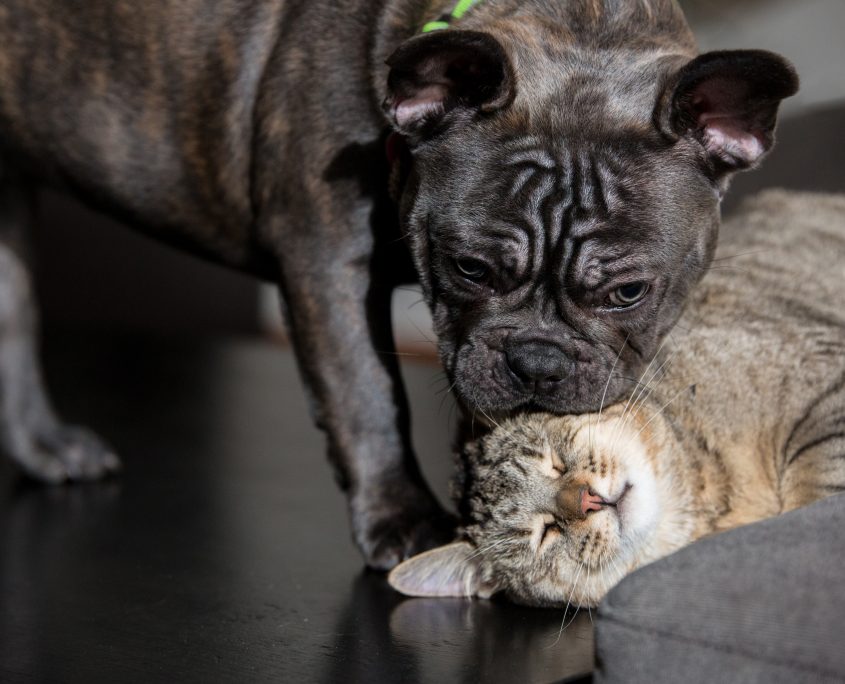French Bulldogs: Peculiar Little Pinched-Nose Lap Warmers
By PAMELA STACE, Freelancer
When I walked into my meeting with Babs (Babette) the French Bulldog and her owners Bill and Carol Gehl, I expected to find an adorable, docile little lapdog; cuddly and affectionate with a laid-back, unassuming demeanor. Well, Babs is certainly adorable, lap-sized and cuddly, but like all French Bulldogs (Frenchies) she is also agile, alert and active. As Bill put it, Babs is not a “precious” dog. She has a mind of her own, and she likes to be the boss!
History
French Bulldogs originated in England in the early 19th century, as the result of a cross between a smaller, lighter English Bulldog and probably a Pug and a Terrier. These dogs became popular companions to British textile workers, particularly lace makers. When the Industrial Revolution forever changed the British textile industry, many artisans’ shops were forced to close. Lace makers and others took their crafts to Northern France along with their dogs. The dogs’ popularity soon spread south where they became companions to many working class Parisians. The little dogs were the favorites of Parisian prostitutes and pictured in paintings and drawings by Toulouse Lautrec. English breeders found a ready market for their Bulldogs in France where they became known as “Bouledogues Français”. Unpopular in England during this time, the dogs were refined as a breed by the French who guarded and championed them through the end of the 19th century. It was around this time that Americans traveling to France discovered Frenchies. They fell in love with them and began taking them back to the U.S., where the AKC recognized them as a breed in 1898.
But after the Depression and just before the start of World War II, Frenchies were considered rare, and only 100 were registered with the AKC in 1940. Starting in the 1980s, the Frenchie’s popularity started to soar, and today the French Bulldog is the AKC’s sixth-most registered breed.
Small Dog/Big Personality
Frenchies are small, muscular and smooth-coated. They have a heavy bone structure and are rather top-heavy. Poor swimmers, they can easily drown due to their large heads and front-heavy builds. Bill had to rescue Babs when she fell into the Gehl’s pool and sank like a stone! However, Frenchies are quite athletic and have excellent balance. The Gehl’s have observed Babs climbing onto tables and walking confidently on their outside window sills! All Frenchies have distinctive, upright “bat” ears which 19th century Americans loved and made part of the breed standard. Previous to their recognition by the AKC, Frenchies could have either folded “rose” ears like English Bulldogs or “bat” ears.
Frenchies are tenacious and can be stubborn, but with patience, persistence and good motivation, they will accept training. They are notoriously difficult to house train, and they shed (regular brushing helps). But they are good watchdogs and are not excessive barkers.
Other Dogs, Cats & Kids
French Bulldogs may not be good with very small children, cats or other dogs. It all depends on the individual dog’s personality and experience, and whether its Terrier or Bulldog heritage is more dominant. A more Terrier-like Frenchie might exhibit a stronger prey drive than a dog with more pronounced Bulldog traits. Again it all depends on the individual.
Health Concerns
French Bulldogs are brachycephalic or short-faced. With that anatomy, there are a number of health issues. The short face can make breathing difficult (Brachycephalic Syndrome). Frenchies snore and snort, which most people find very cute, but they can also have a hard time breathing when over-heated, after strenuous exercise or while under a lot of stress. A Frenchie could have pinched nostrils or an elongated soft palette. Anesthesia can be dangerous. And because of its head shape and size, Frenchies are all whelped by cesarean section. Because they are a stocky breed, Frenchies may also have back problems such as abnormal vertebrae or premature degeneration of intervertebral discs. They may suffer from orthopedic conditions such as hip dysplasia or luxating patellas. And some Frenchies have allergies. Both Carol and Bill told me that they have been fortunate in that Babs has always been extremely healthy!
At Home & Out & About
Incredibly popular, French Bulldogs are highly adaptable, eager to please and not timid. Because of this, they are particularly well-suited for city and suburban life. And because they were bred to be companions, they like to be wherever you are and part of whatever you do!
Homeland: England, then France
Size: 11” to 13” not over 28lbs
Coat Colors: Fawn, black, white, brindle or a combination
Original Job: Companion ratter
Grooming: Occasional bathing, brushing & nail trimming ear cleaning & cleaning of facial folds tooth brushing checking anal sacs
Exercise: Minimal with an occasional good romp
Life Span: 11-13 years





